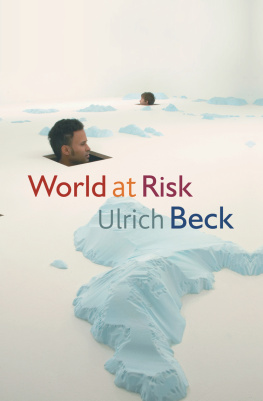Contents
Part 1
Time to Thrive
Chapter 1
Twentysomethings
Chapter 2
Freedom in Your Twenties
Chapter 3
Silicon Valley Twentysomethings
Chapter 4
Teen Freedom
Part 2
Meet Your Challenges
Chapter 5
Change Is Inevitable
Chapter 6
More Than a Second Chance
Chapter 7
Back in the Game for Youth
Chapter 8
Lessons from Bipolar Disorder and Addiction
Chapter 9
The Importance of Fear
Part 3
Live the Life You Choose
Chapter 10
Change the World
Chapter 11
Deep Fitness : From the Inside Out
Chapter 12
Mentors in Abundance
Chapter 13
My Path Is My Destination
Chapter 14
he Prime of My Life
Introduction
Tim Ballard was an ambitious twentysomething preparing for a future career in federal law enforcement. He graduated with a 4.0 GPA in political science and Spanish and earned a masters in international politics. He loved his work as a federal agent.
But it was not an easy job.
One challenge with working in law enforcement is learning how to manage your emotions when you see people suffering because of vile acts committed by others. Tim sought to find that balance of separating his own life from the emotional burden and anguish of what he witnessed in the course of his duties. There is no filter, such as there would be watching a video documentary. You try to put things out of your mind. You try to tell yourself repeatedly theres only so much you can do.
One day he chanced on a newsfeed that would change the course of his life. A small child was kidnapped in Haiti.
A devastating earthquake struck Haiti in January 2010. Just a few weeks before the earthquake, on December 6, 2009, Guesno Mardy of Port-au-Prince had just finished conducting church services. Suddenly his three-year-old son Gardy was gone.
The news article Tim saw included a picture of Guesno Mardy. The picture shows Guesno cleaning up rubble and helping people injured in the earthquake. Tim kept remembering the picture of Guesno, and the story kept coming to mind, despite his efforts to put it aside. That fathers son had been kidnapped. The only search going on was conducted by Guesno as he wandered the streets at night listening for his sons voice.
As the story continued to haunt Tim, a feeling he had to do something was working within his soul. His feelings prompted him to contact the boys father. He arranged for Guesno to come and meet him. He didnt know beforehand what he would say or do.
In their meeting Guesno asked, Can you imagine going to bed at night knowing one of your childrens beds is empty? And not knowing where that child is? Without hesitation, Tim said, I will never stop til we find your son. He had been impressed to make a promise he was not in position to fulfill because his employer couldnt send him to work a case in Haiti.
After consulting his wife, she was acting on faith when she told him the answer was simple: You quit your job and you raise money. You go find that little boy because you made a promise.
Tim Ballard turned in his badge. There was no turning back.
It was time for action. He had to get support, raise funds, and put together a team to go to work finding this young boy.
The challenge was overwhelming. He was following Abraham Lincolns admonition given to Congress in 1862, The occasion is piled high with difficulty and we must rise with the occasion.
His efforts and diligence in his twenties prepared him for a change of course that continues to free people from the shackles of slavery. Tims story reminded me of other stories of inspiring people who broke away from the norm to find or create a new or expanded purpose, far beyond any previous expectations.
Tims story is one example of how people open new paths in life by inspiration, necessity, or both. In this book you will see twentysomethings who bust through stereotypes that might otherwise hold them back, and how people of all generations can fully optimize attributes and opportunities at any age.
As a police officer at Brigham Young University (BYU), I hired and supervised several dozen student security officers (twentysomethings) over the course of my career. I found them to be highly productive, enthused, and competent. They have gone on to many successful careers. I frequently received phone calls from graduate school professors and corporate leaders thanking me for whatever part I had in preparing my employees for the real world. The fact is they came to me well-prepared. I only provided them the opportunity to continue building experience along their paths. I was amazed with their work ethic and integrity. My recruiting and selection process brought in the best prepared employees possible. I expected a lot from them. That was easy for me, because they expected a great deal of themselves.
I tried not to lose sight of the fact that being a twentysomething is not the same for everyone. There were still a lot of twentysomethings without a compass and some without a rudder. The third decade of life can be a challenging time. Looking back on your own twenties, some tough issues may seem trivial now. Its tempting to look at current twentysomethings and wonder whats wrong with them. You may be perplexed when you see your adult children missing what you thought were key markers of adulthood, such as finishing school, getting married, settling on a career path, moving out of their parents house, or becoming financially self-sufficient.
A New York Times Magazine article from a decade ago reports one-third of twentysomethings move to a new residence yearly; 40 percent move back home at least once. Some parents call their kids boomerang children. We dont realize how much external factors influence individual circumstances or decisions. There may be good reasons for their fear and indecisiveness.
There is a tendency to criticize other groups when we havent taken time to recognize the environment they are living in. We may puff our chest out and criticize adult children living at home, or we can help them create the circumstances to courageously move forward in life. Adult children living at home is not a new phenomenon.
Due to the economy, at the end of the Great Depression 48 percent of young adults ages eighteen to twenty-nine were living in the home of one or both parents. That number dropped to 29 percent by 1960, then continued to trend upward. It reached 47 percent in February 2020 just as the COVID-19 pandemic was about to let loose on the economy. By July of 2020, that number reached 52 percent. For the first time in the United States, over half of eighteen to twenty-nine-year-olds were living with their parents.
The COVID-19 pandemic has been hard on twentysomethings, especially those younger than twenty-five who typically work part-time and lower skill level jobs. For those in college, there was even more uncertainty. Among all adults who moved due to the pandemic, 23 percent said the most important reason was because their college campus had closed, and 18 percent said it was due to job loss or other financial reasons.











